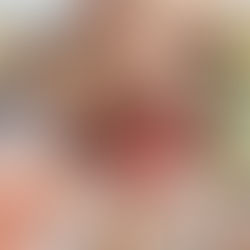Chronic Progressive GDD

The worst category of GDD are subjects with chronic progressive GDD. A condition which is essentially as severe as NSF and can also be fatal. To refresh your memories from an early blog this is the categorization of GDD I have previously described:
1. probably many cases of GDD-type symptoms spontaneously resolve (to a great extent). I suspect that maybe 20% of all individuals who undergo GBCA injection, have prominent symptoms but they resolve in 24 hours, and these individuals blend in with the group of GSC subjects.
2. Maybe 1 % have bonafide GDD but largely resolve at 1 month.
3. Maybe 0.1 % have bonafide GDD but largely resolve by 3 months.
4. Probably 0.05% have bonafide GDD but resolve to a large extent by 6 months.
5. Probably 0.01% have GDD but over the years moderately severe symptoms diminish moderately and they can live with it.
6. Probably 0.005% have GDD and are permanently sick but manage.
7. Probably 0.001% have GDD with a condition as severe as severe NSF, and are devastated. A sizable number may die from the disease.
Chronic progressive GDD is category 7 and about 1 in 100,000 patients who receive a GBCA injection will develop this. This is also about the incidence of fatal anaphylactoid reaction to an Iodine based contrast agent, and slightly more common than a fatal reaction from a GBCA injection. The exactness of these figures are difficult to be certain of with conditions this exceedingly rare. So for many years we have accepted this death rate from these agents, and one could argue maybe it is better to be very sick than dead. This may be true. But certainly what is even more true is:
If we have made these people this sick, shouldn't we try our best to treat them?
This point is what has consumed my creative scientific thinking over the last couple of years, even as most allopathic physicians have denied the existence of the disease, and the radiology community has focused on which agents deposit more gadolinium in the brain, and how has it gotten into the brain.
In my opinion, GDD is essentially a persistent hypersensitivity reaction with recruitment of chronic immune cells.
In some individuals, perhaps the majority of chronic progressive GDD sufferers, detectable Gd may be very small with most of the Gd from loosely bound repositories (skin/skin substrate/ immune cells) being gone, and only minuscule amounts in bone. In these individuals the ongoing role of Gd activating the immune system may no longer be present and the disease has essentially developed a life of its own and become: Gadolinium Induced Autoimmune Disease (GIAD).
With GIAD in mind, I am in the process of developing a low cost broad spectrum autoimmune disease treatment regimen. I term this: Autoimmune Medication And Supplement Envelope (AMASE). The intention of AMASE is to accomplish a number of goals: 1. to treat autoimmune disease (GIAD), 2. to use a broad spectrum autoimmune strategy (as the full extent of the autoimmune processes are not fully known), 3. to be safe, by employing low toxicity agents and at lower dose, and 4. to be low cost. I am also working out a more specific regimen but this involves high cost drugs and with a higher toxicity. So the idea is to give AMASE a lengthy trial to see the level of response in an individual before considering to advance to a more potentially toxic regimen.
There are a number of individuals who have had greater than 20 chelations, certainly with EDTA and even with the better agent DTPA, and are still very sick from the disease. These individuals are now in the territory that simple attempts to remove Gd is not working. I now maintain that certainly by 10 chelations, and likely even by 5, if some substantial improvement has not occurred to chelation, and simple supplementation, an autoimmune treatment regimen must be introduced into the overall treatment plan. Possibly by 20 chelations with DTPA, and no real improvement has occurred , sole treatment of GIAD (likely supplemented by oral chelation - although the likely agents for the latter: oral DTPA and oral HOPO are not FDA approved, hence not currently available) by AMASE or similar is needed. At our center we will begin feeding in elements of AMASE by chelation 6 if no substantial improvement has occurred, and by chelation 11 if still no substantial improvement, the full AMASE regimen.
The potential subjects for this treatment must be aware that essentially all treatments for GDD are in early phase of evaluation, as even the disease is not broadly accepted. So FRAME and AMASE being 2 further evolutionary steps, this is at the very razor-sharp edge of novel clinical use. All of the agents though that we will use in these initial steps at treating Flare and treating GDD that has become largely GIAD, have been broadly used and are considered comparatively safe (and are relatively inexpensive). Scientifically they also make a great deal of sense. What is new, is using them for these indications, and also using them in these combinations. The rationale for the combinations is to make use of synergistic effects between drugs, and to allow decreasing the dose of individual drugs to further increase their safety. There is no medication though that is perfectly safe, nor is there a supplement that is perfectly safe. A poor outcome may result. My informed opinion though is that at present these may be the safest and most effective means to treat a very debilitating and at times fatal disease.
With time, I suspect ourselves and/or others will develop better strategies to remove Gd and also to treat the host response. This is however what we have developed to the present time, and therefore the best ideas we have right now.





